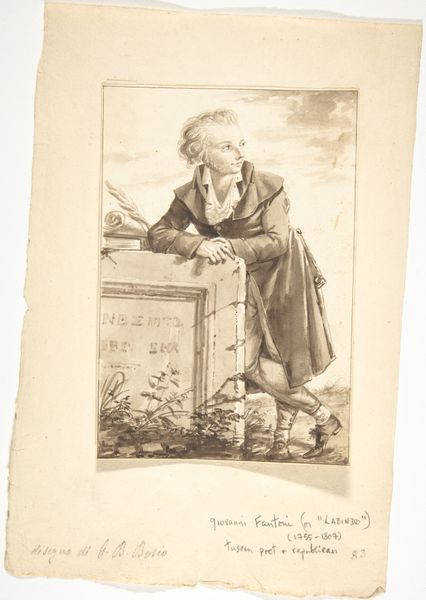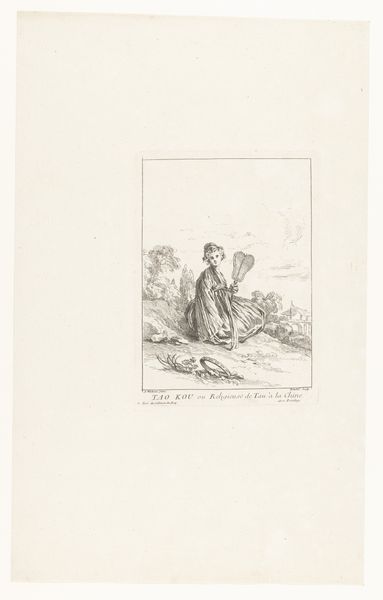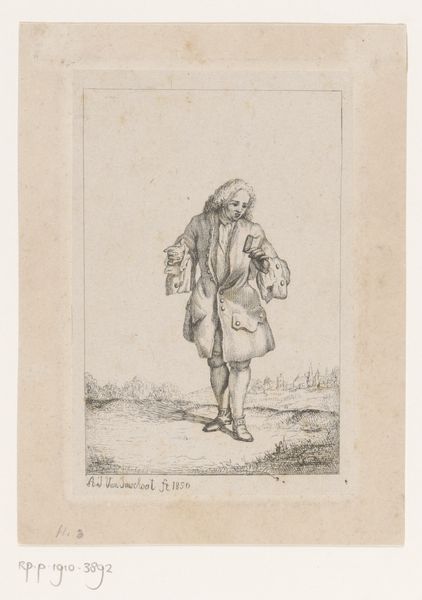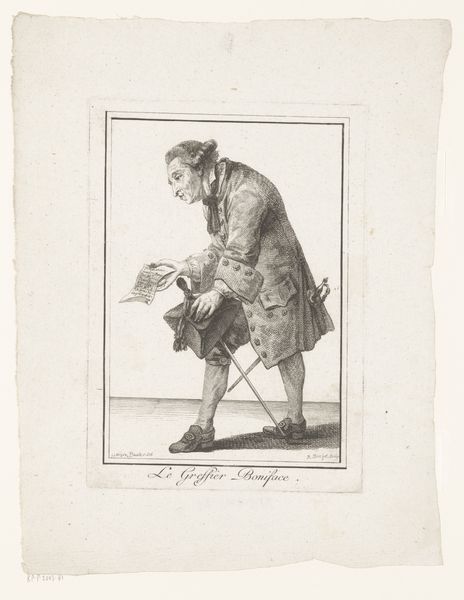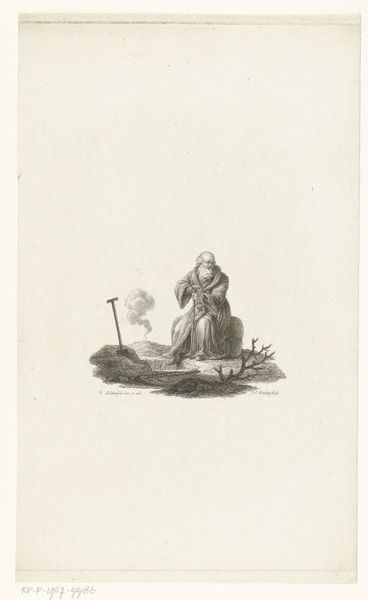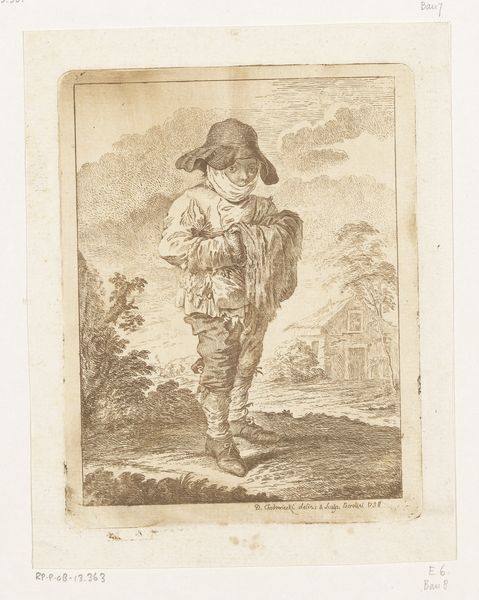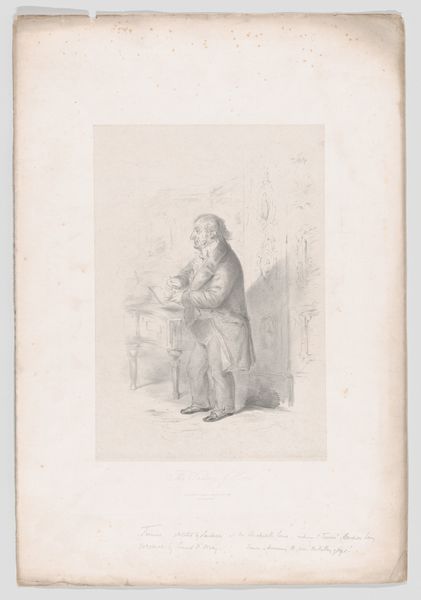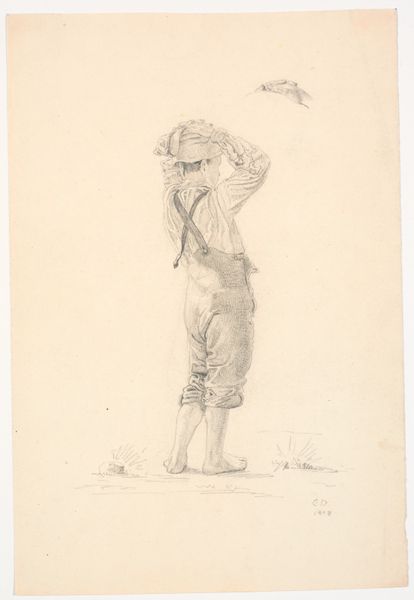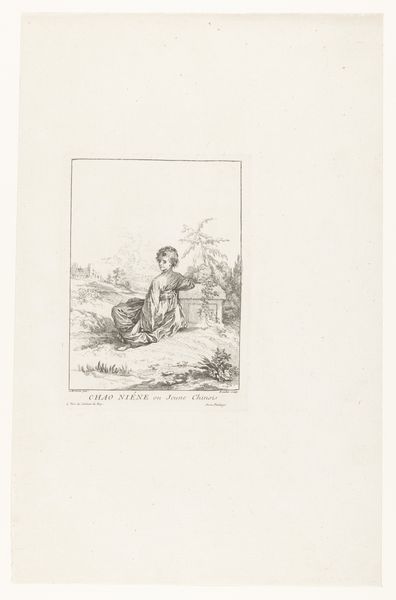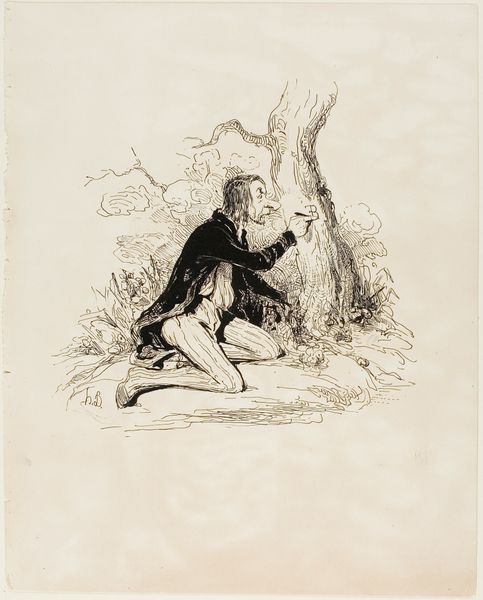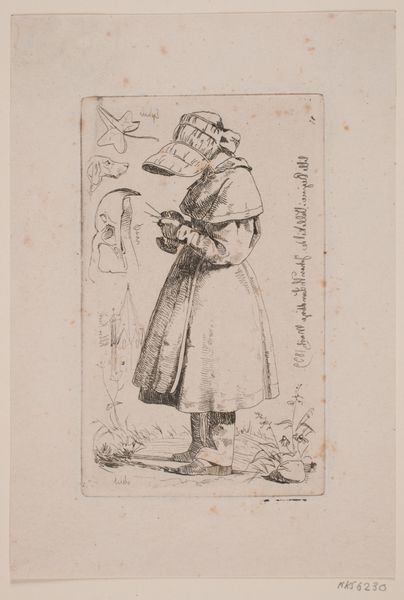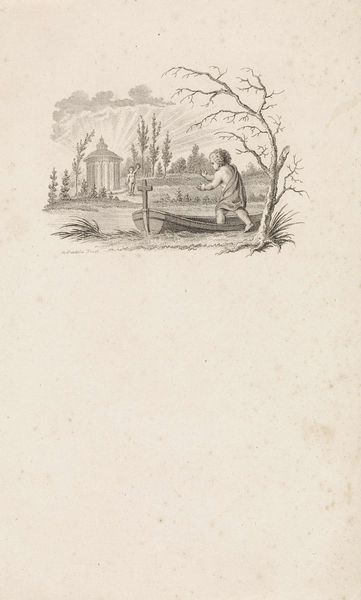
Zelfportret van Dominique Vivant Denon tekenend in een landschap c. 1790 - 1825
0:00
0:00
drawing, etching
#
portrait
#
drawing
#
neoclacissism
#
etching
#
landscape
Dimensions: height 142 mm, width 109 mm
Copyright: Rijks Museum: Open Domain
Curator: Welcome. Before us is "Self-Portrait of Dominique Vivant Denon Drawing in a Landscape," an etching made sometime between 1790 and 1825, currently held at the Rijksmuseum. It's a striking example of neoclassical portraiture, wouldn’t you say? Editor: My first impression is one of solitude. The figure seems absorbed, lost in thought within this vast, open space. It makes me consider what it means to be alone with one's creative pursuits. Curator: Indeed. Considering Denon's prominent role in Napoleon's Egyptian campaign and later as director of the Louvre, this self-representation offers insight into his methods. The etching technique itself allows for meticulous detail, speaking to a specific type of labor involved in art making. The cross-hatching, the controlled bite of acid on the metal—it's all quite calculated. Editor: Absolutely. He is capturing a landscape, but also himself as an individual shaped by that landscape. What cultural memories or aspirations did such imagery evoke in viewers during that period? I notice, too, the symbolic placement of the sparse tree on the right—almost as if mirroring his own isolated stance, yet also implying resilience. Curator: From a production standpoint, etching was often a collaborative process, requiring skilled artisans to prepare the plates and pull the prints. Consider the material reality, the consumption, distribution. Denon wasn't merely depicting a scene, he was actively engaged in the economy and infrastructure of art. It circulated. Editor: True, and yet there is an almost melancholic symbolism here. The slight stoop of his posture, the focused gaze down at his work… what emotional and psychological spaces was he trying to access, both within himself and within his audience? The vast openness around him could equally signify limitless opportunity or profound isolation. Curator: Ultimately, what endures is this interplay of craft, the very texture and substance of the printmaking tradition informing, and shaping, our engagement with Denon's image and world. It pushes us to consider the very material and human resources needed for its creation and proliferation. Editor: An image, heavy with the symbols of both external environment and the internal landscape of its creator. Seeing it afresh is fascinating.
Comments
No comments
Be the first to comment and join the conversation on the ultimate creative platform.
